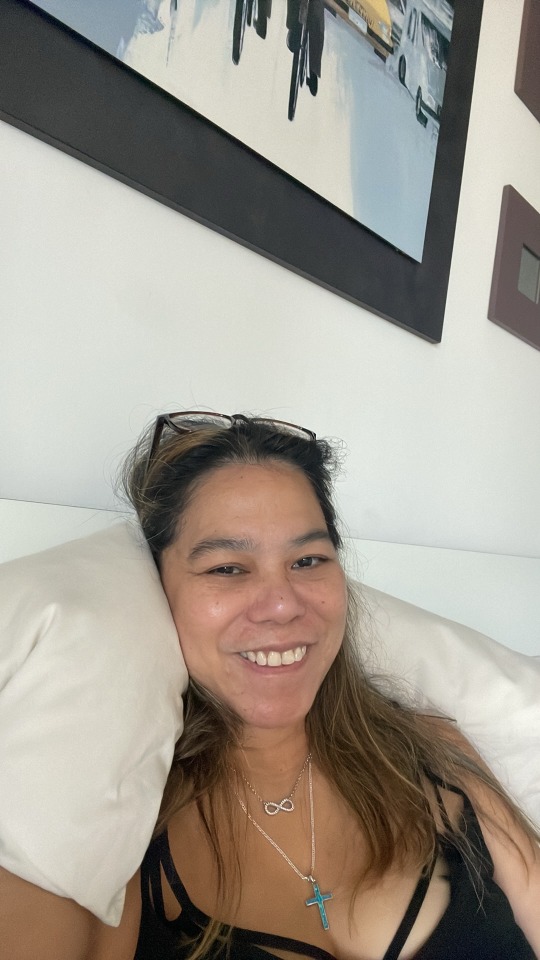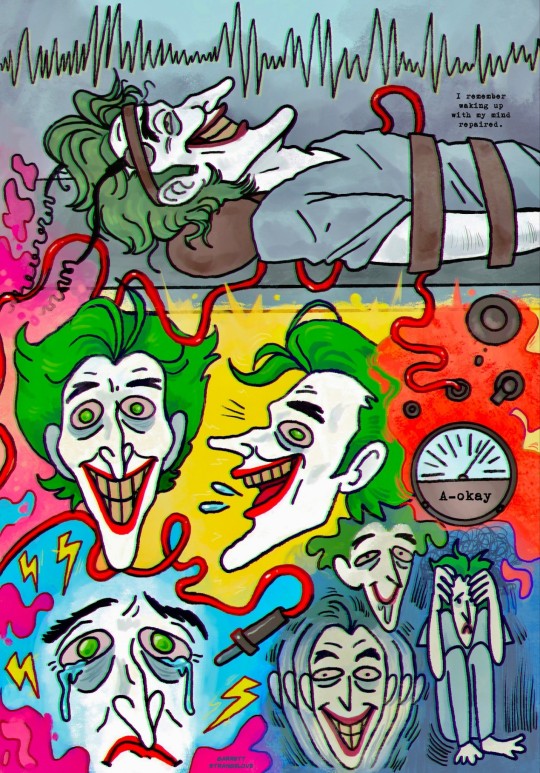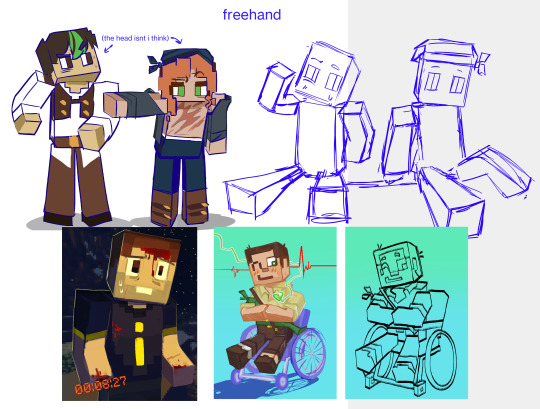#psychomotors
Text
I will start sprinting down the slopes of Palomar Mountain break both of my legs and bash my head against a boulder and that will be The End of Me. That’s why I can’t think about Eridan on patrol. ⛰️🐺
3 notes
·
View notes
Text
“Being validated by feeling heard and seen is a precondition for feeling safe”
-Bessel Van Der Kolk, The Body Keeps the Score
#bessel van der kolk#the body keeps the score#validation#safety#emotional safety#trauma#trauma healing#ptsd#trauma recovery#therapy#emotional health#psychology#pbsp psychomotor therapy#quotes#books#book quotes#bookblr#nonfiction
65 notes
·
View notes
Text
i need to force my brain to Start Functioning because again im working alone next week and rlly need to prove that i can do an autopsy start to finish by myself
#stoppp dissociating holy shit ... bitch i need these neurons to start pulling their weight#the most disruptive symptom i get is psychomotor retardation#and obviously i cant do an autopsy when im moving one inch an hour#if i need to i can call upstairs and get someone to help me but id rlly like to not do that
6 notes
·
View notes
Text
My Solo Adventures
A lot of things are happening in my life this year and I cannot thank the people who supported me on this journey of finding myself through my traveling.
Ever since I was a kid, between 5 & 6-ish, my Tatay Ben introduced me to traveling and riding a plane. Journeying from LOAKAN airport to Manila at that time was extremely and utterly cool (of course that time I didn’t know yet the word extremely or cool haha 😂 ).

Somehow that moment sparked in me that I want to do this for the rest of my life.

Traveling by plane gives me the adrenaline rush that some people experience in dancing, sports, music, fashion, photography, etc.

A lot of people doubted that I could not do this on my own, flying solo, that I would just hurt myself in the process, or this & that.
A lot of excuses.
youtube
On the other hand, I know that there are people who genuinely care about my LIFE. And for that, much love 😍...

My goal for this solo adventure was to put myself out there in the field of hungry dragons. To test my ability if I learn something from Hersenz’s Cognitive and Psychomotor Treatment (Wed group year 2020-2021).

I went to search & discover myself again by traveling. But some people have misplaced feelings over my decision to have this solo adventure of a lifetime.
This year I concluded my 20th flight ✈️
***definition:
Cognition
is the "mental action or process of acquiring knowledge and understanding through thought, experience, and the senses".
It encompasses all aspects of intellectual functions and processes such as perception, attention, thought, imagination, intelligence, the formation of knowledge, memory and working memory, judgment and evaluation, reasoning and computation, problem-solving and decision-making, comprehension, and production of language. Cognitive processes use existing knowledge and discover new knowledge.
Psychomotor
Psychomotor learning is the relationship between cognitive functions and physical movement. Psychomotor learning is demonstrated by physical skills such as movement, coordination, manipulation, dexterity, grace, strength, and speed—actions that demonstrate fine or gross motor skills, such as the use of precision instruments or tools, and walking. Sports and dance are the richest realms of gross psychomotor skills.
Behavioral examples include driving a car, throwing a ball, and playing a musical instrument. In psychomotor learning research, attention is given to the learning of coordinated activity involving the arms, hands, fingers, and feet, while verbal processes are not emphasized.


Me in bed Saturday morning & back again at FONDAZIONE PRADA

At JIMMY CHOO Store in Andrassy Avenue, BUDAPEST
#thoughts#fashion#me moi en mezelf#quotes#cognitive therapy#psychomotor therapy#struggles are real#keeppushingforward#mentalheath#mentalheathawareness#brain injury#you got this girl ✈️#keepexceedingyourgoalsinlife#courage#november 2023#do not be afraid#grateful not hateful#thank you#cognition#psychomotor#Youtube
1 note
·
View note
Text
Something I learnt about my class today:
Most of the dudes were, at some point of their elementary and/or middle school life, relegated to being the referee when they played football (⚽️) bc they were made fun bc of their lack of interest and/or gross motor skills.
#med school#medblr#motor skills#psychomotor development#are nerds born or made? in this essay i will...#lavanda speaks
5 notes
·
View notes
Text
it's that time of night where i ponder if I have psychotic depression or is reality just that horrible
#and that psychomotor retardation do be hittin hard 😍#i literally cannot figure out what im upset about i dont understand the problem and i cant word it properly#trix talking
8 notes
·
View notes
Text
not the vague shapes i see in my peripheral
3 notes
·
View notes
Text
i love anxiety pacing i am currently walking in circles very quickly in my kitchen
0 notes
Text
Find Me Friday: Rosie & Malcolm!
Logo that says Reece’s Rainbow Special Needs Adoption Support in blue, below a blue & yellow paint stroke rainbow graphic with a yellow Ukrainian trident symbol on the right half.
In this series, each Friday I’m able, I want to share a different child or group of children who are available for adoption and listed through the adoption advocacy website Reece’s Rainbow. Please note, names used on…

View On WordPress
#accessible post#adoption advocacy#agency fee reduction#anopththalmia#autism#autistic#available for adoption#available to large families#available to married couples#available to single dads#available to single moms#available to single parents#blind#disability adoption#Down Syndrome#education#encephalopathy#Find Me Friday#FSP#language delay#Latin America adoption#Malcolm#medical history#microphthalmia#older child grant#photo descriptions#psychomotor delay#Reece&039;s Rainbow#Rosie2#video available
0 notes
Text
does anyone else .. like really really sense their physical inhabitation of their body like some days i can't stand up for more than 10 minutes it feels to heavy and dead and it almost hurts because i don't have the strength to hold myself up and then some days i feel like a springloaded gazelle and i'm like ohh my flesh tethered to my skeleton feels nice today
#it's apparently psychomotor retardation from depression and gets better when i'm on wellbutrin or elvanse.. but like#rawdogging it is really horrible and hard
0 notes
Text
youtube
#manie#key#terms#inflating#selfesteem#decreased#need#sleep#talkative#fight#ideas#distractibility#psychomotor#agitation#excessive#involvement#diagnosis#Youtube
0 notes
Text
Bloom's Taxonomy vs Solo Taxonomy: A Comparative Analysis
Understanding the key frameworks in education, such as Bloom's Taxonomy and Solo Taxonomy, is crucial for educators and learners alike. Bloom's Taxonomy, developed by Benjamin Bloom, offers a hierarchical model that categorizes learning objectives into six levels. These levels are:Read more.
#Affective domain#Analyzing#Bloom Taxonomy#Cognitive domain#Learning progression#Metacognition#Psychology#Self-assessment#Solo Taxonomy learning outcomes#SoloTaxonomy#Teaching strategies#Applying#Curriculum design#Evaluating#Instructional strategies#Philosophy#Professional development#Psychomotor domain#Remembering#Understanding#Bloom taxonomy levels#Bloom Taxonomy Domains#Domains of Bloom Taxonomy#Key Features and Applications of Bloom Taxonomy#Applications of Bloom Taxonomy#Why should we use Bloom Taxonomy?#Why should we not use Bloom Taxonomy?#Bloom taxonomy in education#cognitive training#cognitive behavioral therapy
0 notes
Text
Trisomy 18 and Microdeletion 18p Mosaicism: A case report and literature review by Chao-Chun ZOU in Journal of Clinical Case Reports Medical Images and Health Sciences

ABSTRACT
The trisomy 18 syndrome is a common chromosomal disorder due to the presence of an extra chromosome 18, either complete, mosaic trisomy or partial trisomy 18q. The mosaic trisomy 18 patients’ phenotype was extremely variable, from the absence of dysmorphic features to complete trisomy 18 syndrome. The phenotype of 18p deletion syndrome is variable and almost all survived. A 2-year-old girl was referred to our hospital due to growth delay. Mild dysmorphy including thin hair, frontal bossing, low set ears, broad-flat nose, nostrils slightly upward, downturned corners of the mouth, dysplasia teeth, small hands and fingers bilaterally was observed. The karyotype of peripheral leukocyte showed 46,XX, psu idic (18)(p11.2)[55]/46,XX, del (18)(p11.2)[45]. We report this case to add to our knowledge of the trisomy 18 and microdeletion 18p mosaicism.
Keywords: Trisomy 18, mosaic;18p microdeletion; Psychomotor retardation; Karyotype
INTRODUCTION
The trisomy 18 syndrome was first reported by Edwards et al in 1960, also known as Edwards syndrome. It is the second most common autosomal chromosomal disorder after trisomy 21(Down’s syndrome)due to the presence of an extra chromosome 18, which has three basic types: complete, mosaic and partial type (Edwards et al., 1960, Cereda and Carey, 2012,Mudaliyar and Mudaliyar, 2017). The syndrome presents a recognizable pattern of major and minor anomalies, significant psychomotor and cognitive disability are associated with high neonatal and infant morbidity and mortality. The estimated overall prevalence of trisomy 18 in live born is approximately 1/6, 000 to 1/8, 000 while the incidence in fetus is much higher, the difference is caused by fetal loss and pregnancy termination after prenatal diagnosis (Cereda and Carey, 2012, Rasmussen et al., 2003). The mosaic trisomy 18 usually means having more than one cell line in the individual, and it occurs in approximately 5 percent in all trisomy 18 patients (Fitas et al., 2013). The phenotypic manifestations are highly variable, from the absence of dysmorphic features to the complete trisomy 18 syndrome (Tucker et al., 2007). Since the clinical outcomes of complete and mosaic trisomy 18 can be different, it is of vital importance to achieve a correct diagnosis because of implications in medical management and genetic counselling. 18p deletion was first described by de Grouchy and colleagues in 1963 and was estimated to occur in approximately 1/50, 000 live born, which results from deletion of a part or full of the short arm of chromosome 18(Turleau, 2008). The mostly reported clinical features include cognitive impairment, congenital heart defects, small stature, minor facial dysmorphy, and skeletal deformities(Turleau, 2008, Xiao et al., 2019, Hasi-Zogaj et al., 2015, Yi et al., 2014)
Typical facial features include hypertelorism, ptosis, strabismus, broad–flat nose, micrognathia, and low-set big ears. Holoprosencephaly may be seen in approximately 10–15% of patients(Turleau, 2008). In addition, speech and language difficulties, pituitary abnormalities, generalized seizures, dystonia, and autoimmune diseases have also been described(Turleau, 2008, Rao et al., 2001, Graziadio et al., 2009, McGoey et al., 2011). However, these non-specific features are easily overlooked clinically. The clinical phenotype severity is related to the size and location of deletion region. In this report, we present a 2-year-old girl of mosaic trisomy 18 and 18p microdeletion with mild psychomotor retardation, cognitive impairment and language developmental disability.
CLINICAL DESCRIPTION
A 2-year-old female second child of non-consanguineous parents was admitted to our hospital due to growth delay. Her mother and father were 34 years old and 38 years old when giving birth to her. She was born at full-term with uncomplicated gestation, her birth weight was 3.35 kg and the length was about 50 cm. No feeding difficulty and complications were referred in the neonatal period. She had a motor retardation of autonomous walking until 22-months old and intelligence disability and language disability. She only knew a few simple words like ”mama“, not ”baba“, and she cannot communicate clearly with others though she was willing to speak to strangers. Gesell Developmental Schedules performed in local hospital indicated mental developmental delay in motor behavior, language behavior, adaptive behavior and personal-social behavior at age of one year and 8 months old. The height of her father, mother and 15
years old sister were 165cm, 161cm, and 155cm, respectively. No similar history was noted in her family.
On physical examination, she had a height of 81.4 cm below -3SD and a weigh of 11.6 kg below -1SD. Mild craniofacial dysmorphy was present, including thin hair, frontal bossing, low set ears, broad-flat nose, nostrils slightly upward, and downturned corners of the mouth while other craniofacial anomalies were not obvious (Fig.1A). Her hands were small especially her fingers, but the fingernails are normal (Fig.1B). Her teeth were dysplasia (Fig.1C). The echocardiography revealed patent foramen ovale (ϕ 2.96 mm) while no murmur was present. The muscle tension was normal and no other organ abnormality was detected in our patient.
Laboratory examinations (urine, liver, kidney, thyroid hormone, GS/MS and blood glucose analyses) were all normal. Insulin-like growth factor-1 was 72.5 ng/ml (normal range, 55-327 ng/ml).
MANAGEMENT AND OUTCOME
Ten months ago, the child was brought to a local hospital with developmental delay, the peripheral leukocyte karyotype was taken and revealed two abnormal cell lines, the result was 46,XX, psu idic (18)(p11.2)[55]/46, XX, del (18)(p11.2)[45] . She was then referred to another hospital to take the whole-exome sequencing demonstrating a deletion at 18p11.32-p11.22 (GRch37/hg19, chr18:158679 9708482del) and a duplication at
18p11.21-q23(GRch37/hg19, chr18:12012132 78005255dup). She was diagnosed mosaic trisomy 18 syndrome.

Figure 1: Clinical manifestation and karyotype of our patient. (A and B) thin hair, frontal bossing, low set ears, broad-flat nose, nostrils slightly upward, downturned corners of the mouth, small hands and fingers bilaterally; C) dysplasia teeth; (D) Karyotype shows 46,XX, psu idic (18)(p11.2)[55]/46,XX, del (18)(p11.2)[45]
DISCUSSION
The first reported patients with trisomy 18 syndrome were initially described by Edwards et al and Smith et al in 1960s, while the first case of mosaic trisomy 18 was reported in 1965. Less than 5% portion of patients have mosaicism of trisomy 18, and Banka et al reminded that routine karyotype from lymphocyte culture may not be sufficient to diagnose mosaicism if practitioners suspect a diagnosis of mosaic trisomy 18, karyotype from skin fibroblasts should be considered. Since then over 40 cases of mosaic trisomy 18 have been described, Tucker et al reviewed 33 reported individuals of mosaic trisomy 18 and added 2 more cases in 2007. Their clinical manifestations are extremely variable from complete trisomy 18 syndrome with early death to near totally normal. Some physical features are relatively more common and included brachydactyly, high arched palate, microcephaly, delayed bone age, frequent respiratory infections and otitis media, heart defect, 5th finger clinodactyly, micrognathia, and hypotonia. The most common heart defect is ventricular septal defect in mosaic trisomy 18. Our case has mild craniofacial dysmorphy and patent foramen ovale, and no other physical anomalies were observed.
Trisomy 18 mosaicism usually indicates the existence of more than one cell line in the individual. The peripheral leukocyte karyotype demonstrates pseudodicentric chromosome substituting a normal chromosome 18 in 55 cells and chromosome 18 missing the end of the short arm in 45 cells. The skin fibroblasts karyotype was not taken. Furthermore, there is no correlation between the physical and intellectual findings and the percentage of trisomy 18 cells in either peripheral leukocytes or skin fibroblasts. Besides, there is no correlation between the percentage of trisomic cells in peripheral leukocytes and brain, gonads, or other key organs. The variety of mosaic trisomy 18 may be related to the percentage of trisomic cells in different key organs of the body.
For complete trisomy 18 patients, approximately 50% of infants live longer than one week and about 5-10% of children survive beyond the first year. In overall, trisomy 18 mosaicism patients usually survive longer when compared to complete trisomy 18. This does not mean that all the mosaic trisomy 18 patients have a longer survival, some died a few hours after birth. For normal or mild phenotypical mosaic trisomy 18 cases, some were diagnosed due to recurrent miscarriages or giving birth to a child with trisomy 18 while others may never be identified. 18p deletion syndrome, also called monosomy 18p and De Grouchy syndrome type Ⅰ, which means a deletion of full short arm of chromosome 18 or a microdeletion of the short arm of chromosome 18. Some researches showed that nearly half of patients have breakpoints in the centromeric region and the rest scatter in the short arm, and approximately half of the deletions occur on the maternal chromosome 18 no matter where the breakpoint locations are. Our case’s breakpoint is at the 18p11.32-p11.22. Approximately two thirds of patients’18p deletion are de novo; the rest may be due to a de novo unbalanced translocation or malsegregation of parental chromosome rearrangement or a ring chromosome. The patient’s height and weight is 81.4 cm below -3SD, 11.6 kg below -1SD, respectively. It may be a prodrome of small stature, but her insulin-like growth factor-1 was normal. It also could be contributed to feeding problem. More follow-up work needs to be done to figure it out. Some reported cases show that growth hormone replacement treatment is efficient in growth hormone deficiency patients.
Our case has trisomy 18 and microdeletion 18p mosaicism simultaneously. The possibility of meiotic chromosomal nondisjunction of the ovogonia/spermatocyte was increased because of her parents’ advanced maternal age, some women may have higher a risk for nondisjunction. More possible mechanism may be a de novo unequal recombination occurring in early embryonic mitosis. Some deletions are from the parents, there is no way to figure her mutation mechanism out since we can not get her parents’ consent to analysis. The phenotype of our case combines two syndromes’ typical features, including common psychomotor retardation, cognitive impairment and congenital heart defect, characteristic small stature and language impairment of 18p deletion syndrome. Our case’s uncharacteristic craniofacial features also combine two syndromes.
In a conclusion, mosaic trisomy 18 and 18p deletion syndrome both are chromosomal disorders which has a variety of clinical manifestations. If an individual has untypical phenotypical anomalies and psychomotor and cognitive disability, chromosome disorder should be considered and cytogenic analysis is needed.
Acknowledgements: We thank the patient and his parents for permitting us to use the data.
For more information: https://jmedcasereportsimages.org/about-us/
For more submission : https://jmedcasereportsimages.org/
#Trisomy 18#mosaic#18p microdeletion#Psychomotor retardation#Karyotype#trisomy 18 syndrome#Chao-Chun ZOU#jcrmhs
1 note
·
View note
Text

I have long been interested in what procedures are carried out on the Joker in Arkham. And comics gave me the answer about lobotomy, but I don’t remember mentions of electroconvulsive therapy (ECT) (if there are such comics, recommend them in the comments).
I'm a big fan of the Joker being miserable, so I think that the procedure was carried out on him in a completely inhumane way: without anesthesia and precautions against fractures. Accordingly, all the side effects of ECT affected him 10 times more strongly. And they are:
1. Nausea and vomiting
2. Dizziness
3. Disorientation
4. Memory loss, impairment of long-term memory
5. Psychomotor agitation
6. Derealization
7. Insomnia
8. Tachycardia
9. Dental injuries
10. Jaw dislocation
Etc...
And if ECT calmed his manic tendencies for a while, it also gave a bunch of side effects, and the Joker simply experienced emotional overload, anxiety and fear of the procedure.
Batman once found out about the inhumanity of therapy and gave them all a hard time. Did the Joker feel better after this? A little.
127 notes
·
View notes
Note
do you freehand the cubitos, or do you use guidelines/shape tools? just curious
I'll first direct you to this post where i show my process and this very early post of studying the cubito proportions
the answer is that it really depends. nowadays I can freehand it pretty well but that wasn't the case at all in the beginning. My super early paintings took a long time and i used a lot of references. I actually disliked how tight my workflow was and loosened up a lot, especially at the end of 2023 when I was experiencing psychomotor retardation. 2024 was a period of relearning how to draw properly again. I really only use guidelines for their heads now.
otherwise my references usually look like the skin of the hermit pulled up or a blockbench / novaskin / mcskins.top model. Here are some images + screenshots to help illustrate the point.


You'd be surprise how off a cubito drawing might look if you only trace directly. It's always good to keep in mind their proportions like if you were drawing a regular human figure i.e the torso and legs are the same size & the arms are the same length as the torso. Do you want to buy my blog for $100 ill even do it for 50
21 notes
·
View notes
Note
what are the negative effects of common atypical antipsychotics?
> First, the adverse effects of antipsychotic medications are widely attested and very serious. They fall into at least two classes: cognitive impairments, and extrapyramidal disorders (such as akathisia, parkinsonism, and tardive dyskinesia). Both are concerning.
> Increasing evidence, both anecdotal and studied, suggests that antipsychotics frequently impair cognitive functioning. This is often described by those who have suffered from it as “zombie-like”, or as though they lacked the capacity for abstract thought [1]. There is a large empirical literature giving rigorous backing to these informal reports (see [2] for an overview and bibliography); more specifically, much of this literature suggests that antipsychotics can seriously impair procedural learning [3] [4] [9]. These empirical findings in the scientific literature, while plentiful and robust, seem not to have fully percolated yet into clinical practice.
> In addition to their potential adverse cognitive effects, antipsychotic medications are well-known to carry the risk of painful, disabling, and potentially damaging motor (“extrapyramidal”) disorders. These include akathisia (commonly described by those to experience it as “torture”), parkinsonism (a collection of symptoms similar to those involved in Parkinson’s Disease), and tardive dyskinesia (a chronic and unremitting motor disorder resulting from long-term use of antipsychotics) [5] [6] [7] [8]. While these conditions are common generally among users of antipsychotics (for those taking haloperidol—a commonly prescribed antipsychotic—extrapyramidal symptoms may present at or above fifty percent [10]), there is evidence they may be especially likely and severe, even at low doses, for autistic people [11] [12].
[1] Medical Xpress, “Antipsychotic meds prompt zombie-like state among patients” 5 Feb 2015 https://medicalxpress.com/news/2015-02-antipsychotic-meds-prompt-zombie-like-state.html
[2] Sarah Constantin, “Antipsychotics Might Cause Cognitive Impairment” 14 Jan 2018 https://www.sarah-constantin.org/blog/2018/1/14/antipsychotics-might-cause-cognitive-impairment
[3] Psychopharmacology, “Procedural learning in schizophrenia after 6 months of double-blind treatment with olanzapine, risperidone, and haloperidol” Sep 2003 https://pubmed.ncbi.nlm.nih.gov/12827347/
[4] Neuropsychopharmacology, “Effects of risperidone on procedural learning in antipsychotic-naive first-episode schizophrenia” Jan 2009 https://pubmed.ncbi.nlm.nih.gov/18536701/
[5] Missd, “The Agony of Akathisia” 6 Dec 2015 https://missd.co/256/
[6] National Commission on Correctional Health Care, “Akathisia: A Mysterious Medication-Induced Movement Disorder” 19 Jul 2021 https://www.ncchc.org/akathisia-a-mysterious-medication-induced-movement-disorder/
[7] Cleveland Clinic, “Parkinsonism” https://my.clevelandclinic.org/health/diseases/22815-parkinsonism#symptoms-and-causes
[8] National Library of Medicine, “Tardive Dyskenisia” 16 Aug 2022 https://www.ncbi.nlm.nih.gov/books/NBK448207/
[9] Journal of Psychiatric Research, “Effects of haloperidol and risperidone on psychomotor performance relevant to driving ability in schizophrenic patients compared to healthy controls” Jan 2005 https://pubmed.ncbi.nlm.nih.gov/15504428/
[10] MedicineNet, “Side effects of Haldol (haloperidol)” https://www.medicinenet.com/side_effects_of_haloperidol/side-effects.htm#haldol_haloperidol_side_effects_list_for_healthcare_professionals
[11] Spectrum News, “The missing generation” 9 Dec 2015 https://www.spectrumnews.org/features/deep-dive/the-missing-generation/
[12] Journal of Neurodevelopmental Disorders, “High rates of parkinsonism in adults with autism” 30 Aug 2015 https://jneurodevdisorders.biomedcentral.com/articles/10.1186/s11689-015-9125-6
144 notes
·
View notes